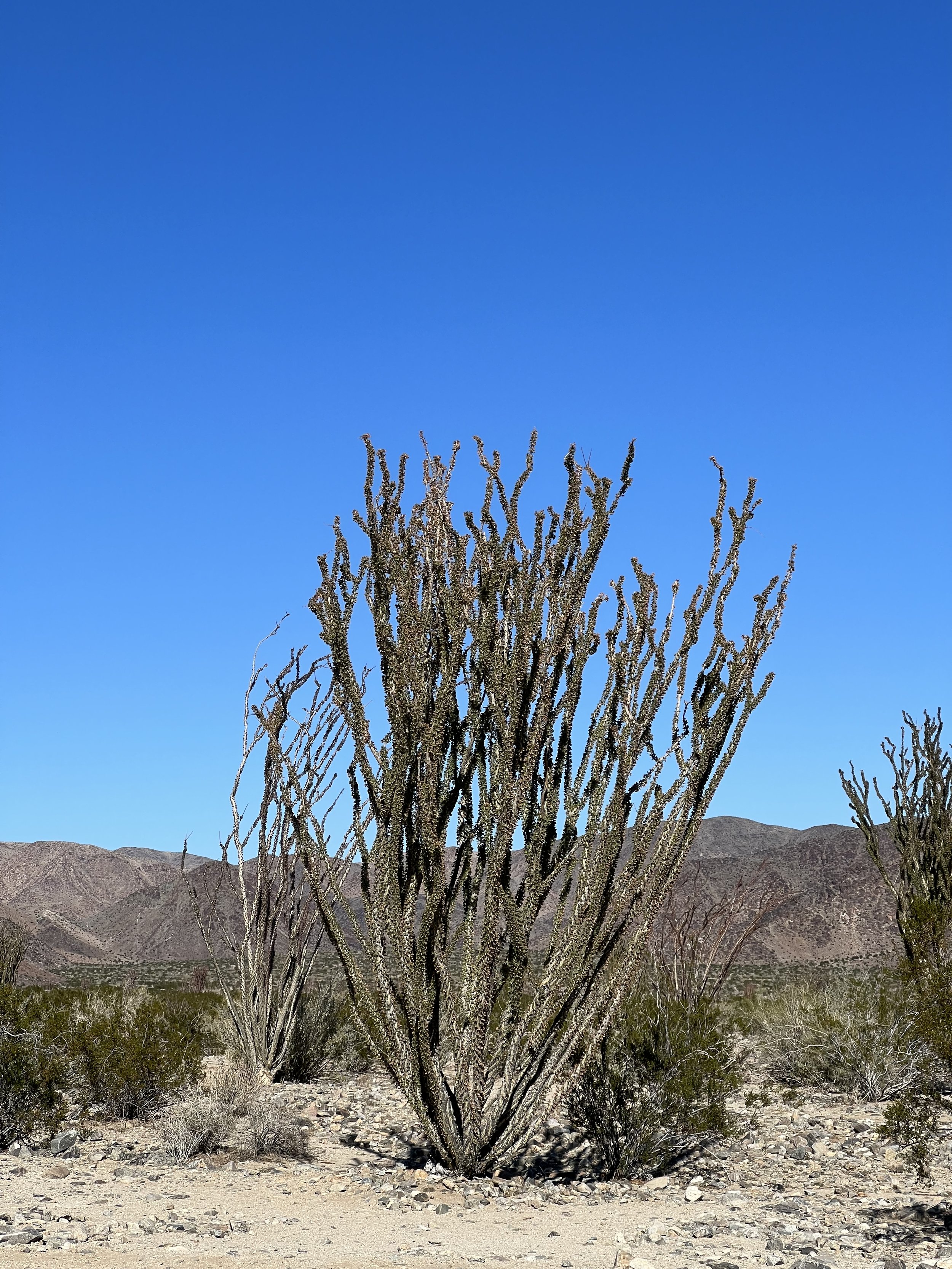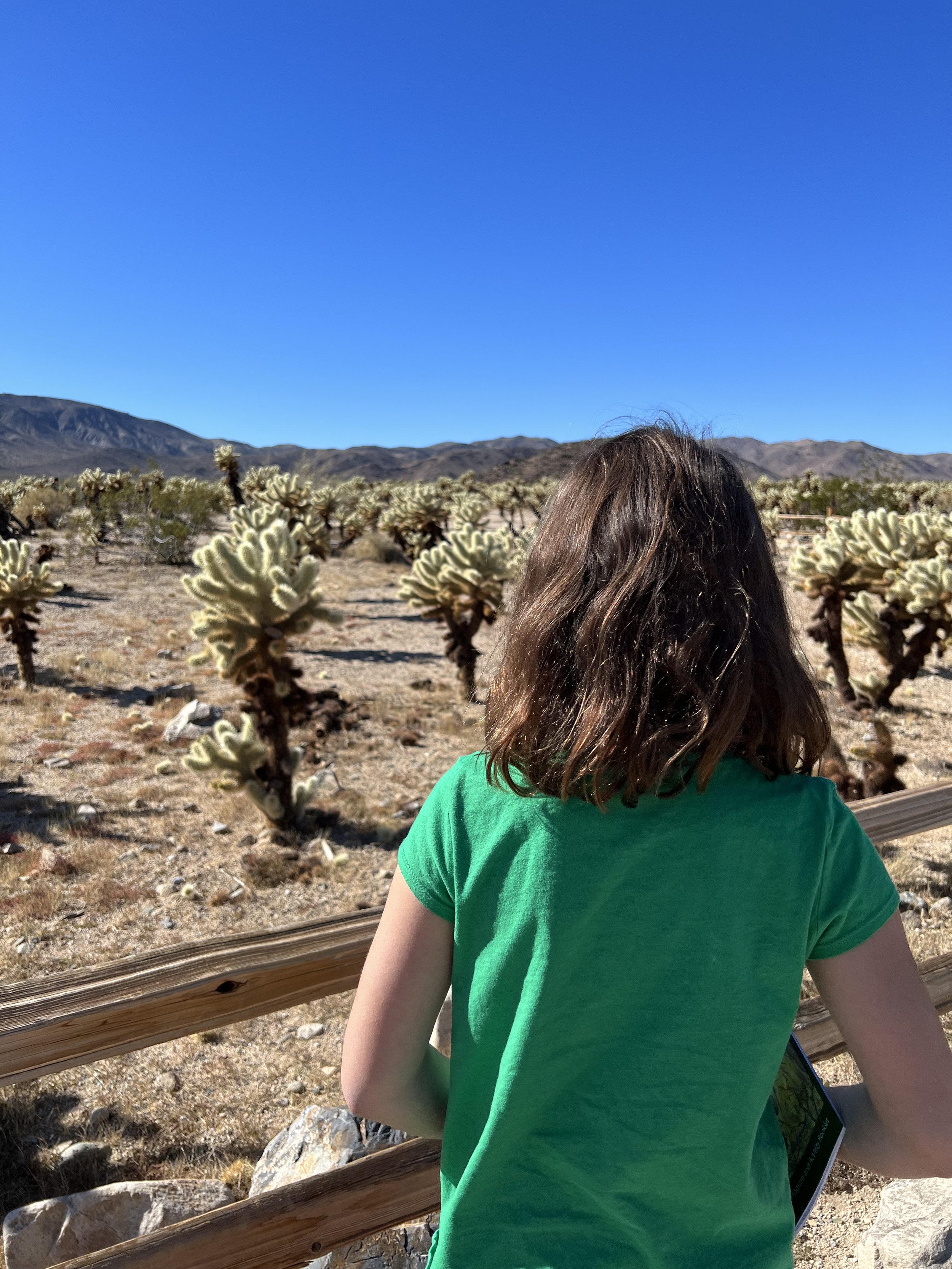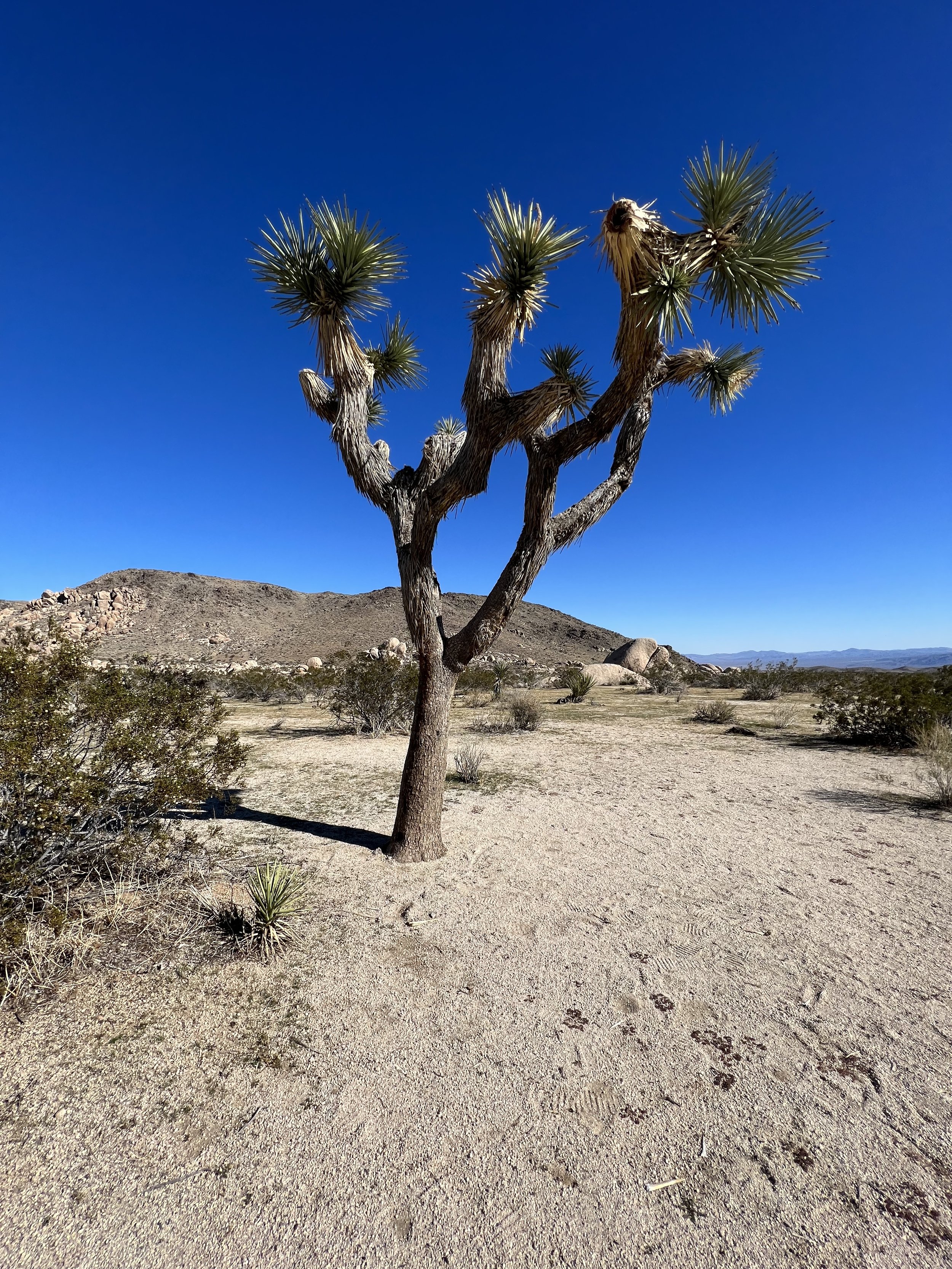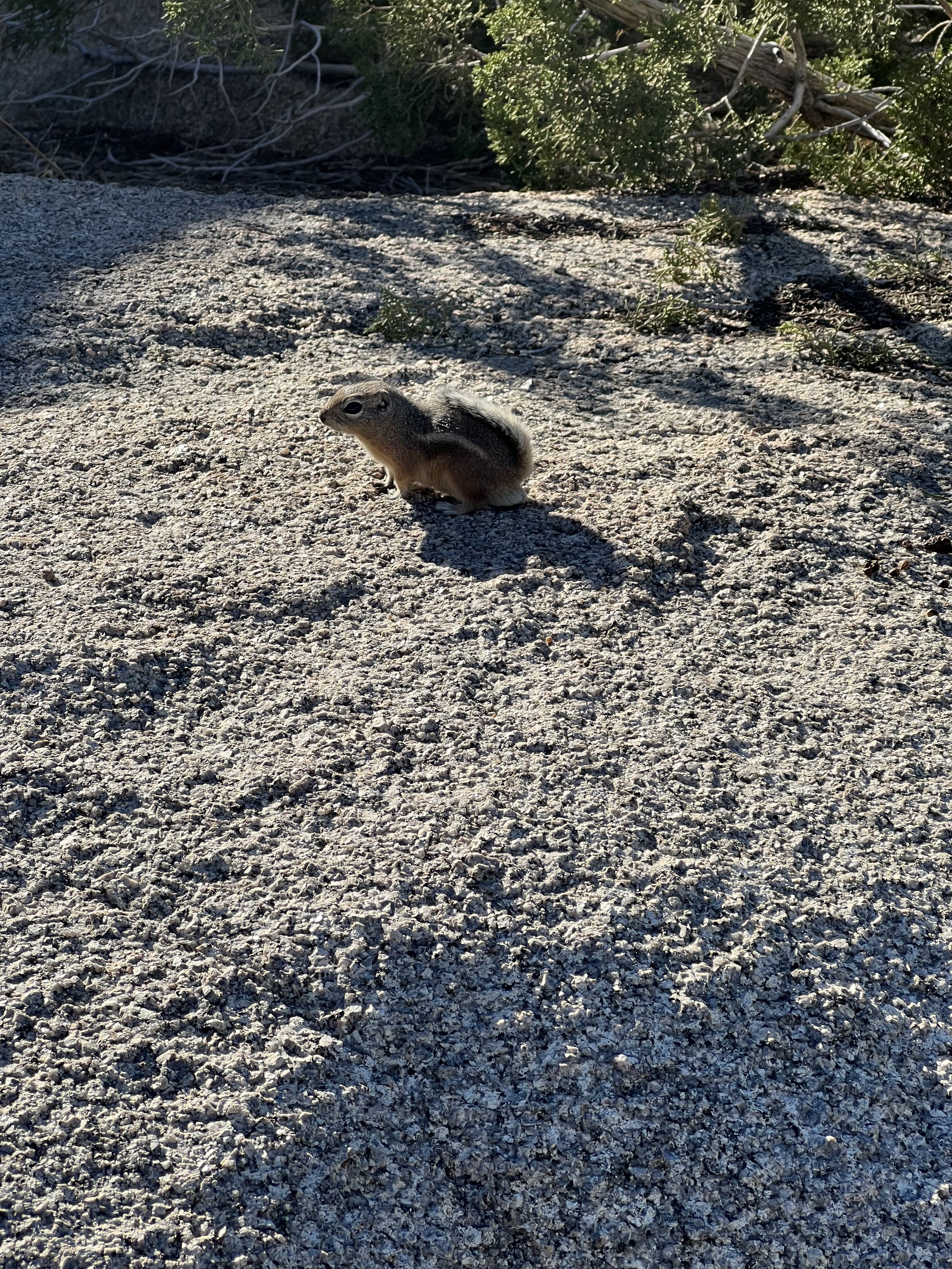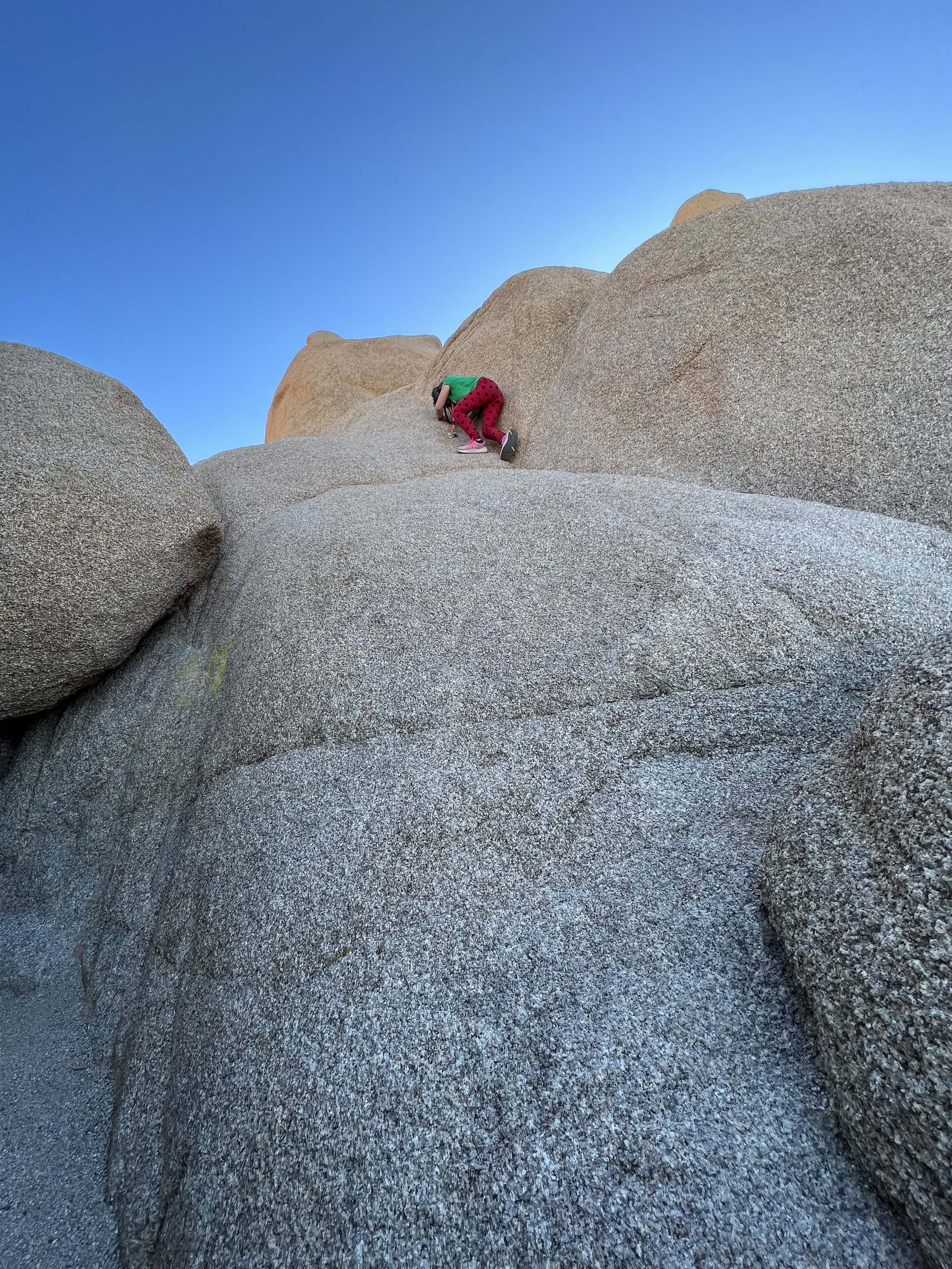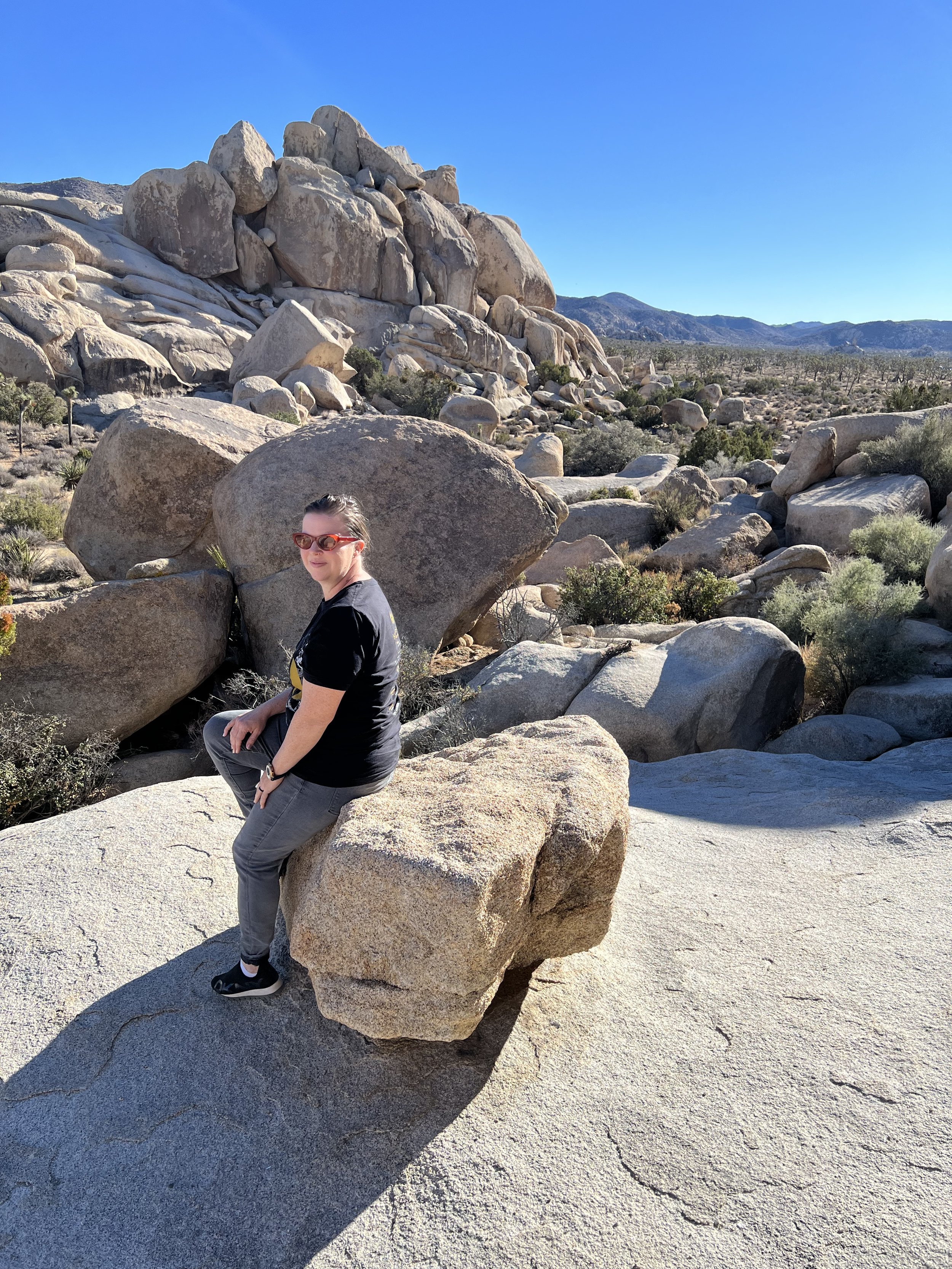How to Spend One Day in Joshua Tree with Kids
From a kid’s perspective, Joshua Tree is a fabulous park because it’s like a giant jungle gym. From an adult’s perspective, it’s a wonderful park because it’s like a giant jungle gym. We visited in November as part of our Fourth Grade Pass tour.
History
According to the 29 Palms Band of Indian Missions,
For 10,000 years, Native Americans had hunted and gathered in the mystic desert landscape that became Joshua Tree National Park. The Chemehuevi, Serrano, and Cahuilla regularly used the high desert of majestic boulders, canyons, and caves as part of their seasonal rounds.
America’s obsession with the Southwest brought more development and travel to the region by the 1920s and endangered the environmental landscape. Pasadena resident Minerva Hoyt led the charge to dedicate Joshua Tree National Monument in 1936 to preserve the land. It became a National Park in 1994. Read more on the NPS park history website.
Colorado Desert
The park covers two types of desert: the Colorado Desert and the Mojave Desert. We entered the park on the Colorado Desert side on Pinto Basin Road and stopped at the Cottonwood Visitor Center. As usual, the rangers were fantastic. One took the time to talk to my 9yo about the park, give her a junior ranger guide, and discuss itineraries with us. You won’t see buildings or water refill stations for quite some time after this! There are a few toilets throughout the park but be prepared for long lines.
One highlight of the Colorado Desert is the plentiful Ocatillo. They are more closely related to tea or blueberry than cacti. I think they are mesmerizing.
Cholla Cactus Garden
A short drive through the Colorado Desert takes you to the Cholla Cactus Garden. The type of cholla cactus here is referred to as “teddy bear” because they look so cuddly. They are actually very prickly, of course, so remind your kids to stay on the path! The garden winds a nice little trail through hundreds of cholla so you can see them up close (and as far as the eye can see).
Arch Rock
You start seeing a lot more actual Joshua trees on the Mojave side. We pulled off at Arch Rock to see some up close. My daughter had fun doing funny yoga poses to mimic the shapes of the trees.
Split Rock Picnic Area
One of my favorite things about National Parks is the people you meet. We shared our picnic table with a group from Canada. They were super interested to hear about the fourth-grade pass and my daughter’s experiences in various parks.
We also shared our lunch with a white-tailed antelope squirrel. It stayed very close, on the rock next to us! You don’t often see much wildlife out in the desert during the day. But the antelope squirrel is diurnal and comes out in the daytime to avoid predators. It uses its tail as a sunshade.
Skull Rock
This section of the park is for climbing. The rock formation shaped like a skull is the noticeable attraction. All around it, there are rocks to scale, tunnels to slip through, and lovely views to be had. This was our favorite part of the park and it was difficult to convince my daughter to leave.
The Way Out
Although we didn’t have time to hike the full trail to the actual “Hall of Horrors”, we pulled over and enjoyed climbing more rock formations. The landscape changes quite a lot throughout the park, so it’s cool to check out the variety.
We exited through the West Entrance Station. After that, we stopped at the visitor center and shop in the town of Joshua Tree. There was quite a bit of driving, which gave my 9yo time to fill in the junior ranger book. She was happy to receive her badge at the shop. The town has some funky gift shops and art studios. If you’re in search of good coffee (like I always am), you’ll find it in the town.
With more time, I would have definitely stayed to see the sunset and stars. We sacrifice some experiences when we only have one day. But this park is not to be missed, whatever time you have!



